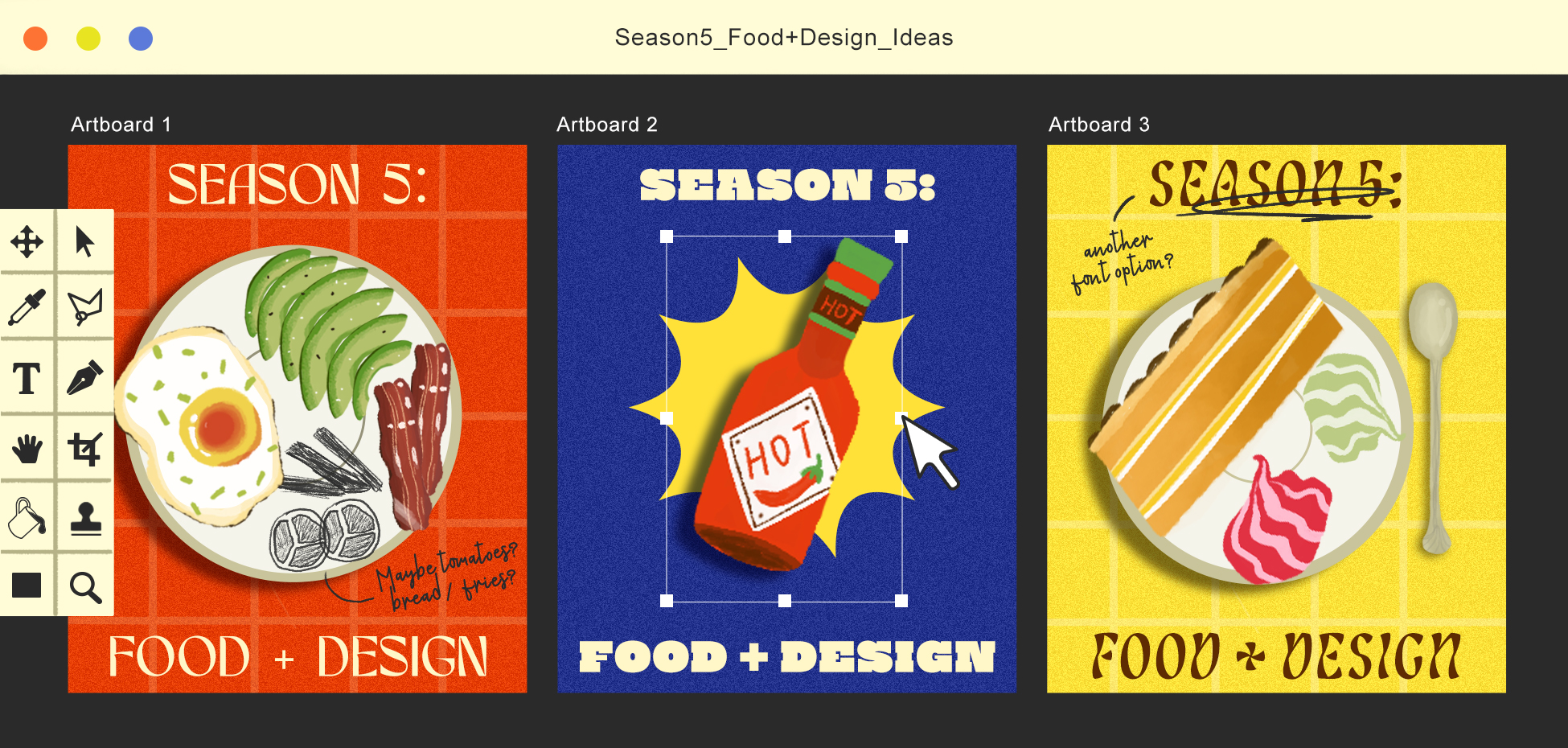We halve a head of cabbage, and find a topographic map in its insides. We swirl dosa batter on a tava, and notice it looks like a bubbling galaxy, billowing and spiralling out, turning colour as it cooks.
All food is design, whether found or intended.
In the way we build our farms and gardens, in the way we assemble a sev puri, in the firework inflorescence of fresh green saunf, in the plating of a thaal (or a thali, or a sadya), in the construction of a pressure cooker, in the way a menu reads, in the wild innovation found in India’s street foods, in the yellow of the haldi in our kadhi, in the sweet, hot, crunchy honeycomb of achhappams, in the way we rear animals for dairy and meat, in our compact cutting chai caddies, in the Insta-friendly lighting above our restaurant tables, in the ‘dona’ dried peepal leaf plates and bowls and in the pangat at langar, in the playlist at our favourite bar, in the slop of pav bhaji alongside buttery pav and a glistening wedge of limbu – design is, and always has been, all around our foodways, and in the many ways we eat, grow, manufacture, and distribute food.
In 1972, Charles Eames, celebrated American designer, architect and filmmaker – best known for the heavily replicated Eames’ lounge chair – spoke in a Harvard lecture about his ‘banana leaf parable’. Noticing how Indians in the southern states use the frond of a large herb as a plate, he said, “it’s that process that has happened within the man that changes the banana leaf”.
Among the many definitions for design, Eames’ declaration, “Design is a plan for arranging elements in such a way as best to accomplish a particular purpose” seems most succinct when it comes to the way we organise our food.
And then, there are the fascinating explorations of “eating designer” Marije Vogelzang. In this video she says that food is “a direct material that you can make something with instantly, and then [have] people eat your design”.
Keep these ideas and thoughts in mind as you snack on, or make a meal of, enthucutlet’s fifth season, Food + Design.
In our latest collection of essays and guides – writers, designers, pastry chefs, architects, and yes, farmers too, talk about the many ways in which our food experiences are also deeply sensorial design experiences.
Our writers’ contemplations cover a wide range, from the clever chaos of the kirana dukaan with its sachet torans, to the physics of regional tandoors across India. A writer-turned-regenerative food grower walks us through her edible garden, and shows us how she collaborates with nature on a patch of land that not only feeds her with its bounty, but also helps her to connect with her own wild bits.
A designer who is also an avid cook shares his obsession with restaurant menus. An architect explores the idea of restaurant design as storytelling, and restaurants as spaces of modern-day congregation, places where visceral emotions come alive. A product designer who works closely with visual language tells us how the colour of food and food packaging drives our appetites.
In Fusion Confusion, we look at the versatility of a single ingredient – the egg – and how it can shapeshift into anything our imaginations allow, from pizza to halwa. The founder of a brand of kitchenware tells us about how she is collaborating with craftsmen to bring traditional vessels back to the fore, by making them relevant to our modern ways of cooking.
In a month, we’ll have even more stories coming your way – essays about traditional green markets, about unusual farms, about masala dabbas, about colour theory in pastry.
As we put this season together, we started looking at and experiencing every bit of produce, every utensil, every food store, every meal we made or ate, as design. As you settle into our stories, know this: once you see food as design, you can’t unsee it.

